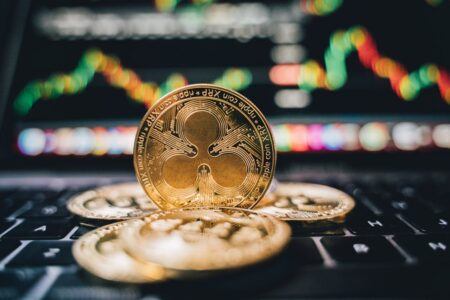Volume on the peer-to-peer (P2P) Bitcoin exchange LocalBitcoins has hit an all-time-high in Argentina as it has recently on the Paxful P2P exchange, as the country’s economy minister considers defaulting on $65 billion worth of sovereign debt.
While this does translate into an increase in volume on these platforms, the falling value of the Argentine peso must be factored into the equation.
Circling Vultures
The Latin American country, no stranger to currency crises, has been hit hard by the economic turmoil caused by the COVID-19 lockdowns and thus unable to make payments against some of its sovereign debt. Already in a grace period, these payments are due no later than May 22.
The main private holders of Argentine debt are so-called “vulture funds” like BlackRock, Fidelity and T. Rowe, made infamous in the financial press for swooping in to buy defaulted assets during previous of the country’s economic crises. (However, the largest creditor is the IMF.) These creditors have so far been staunch in their collective refusal to alter the terms of Argentina’s debt repayment.
If the vulture debt is allowed to go unpaid or a deal not reached to restructure the debt, Argentina will likely lose access to international credit lines and foreign investment it needs to keep keep the country afloat.
Skewed Lines
Repeated currency crises have led to a seemingly terminal decline in the value of the Argentine peso.
At the same time, we have also seen a consistent and huge rise in the amount of trading volume on P2P crypto exchanges in Argentina (and other Latin American countries). Volume on LocalBitcoins in Argentina, on the chart pictured above, seems to have tripled just during 2020.
It is easy to assume that uncertainty and fear in Argentina, especially surrounding the peso’s falling value, is driving crypto trading there. But it is important to also remember that these data are also priced in the local currency.
Therefore, it would be possible for the national volume to appear to be dramatically rising; but if that local currency is refactored into a more stable one like the dollar or euro, the rise in trading volume would look more modest.
If we look only at the peso’s value against the US dollar from the start of 2020, we see that it has steadily dropped for 11% at time of writing.
Taking this into consideration, we can temper the charts of peso-denominated volume that we saw earlier. But even given this adjustment, volume in Argentina seems to be rising far faster on P2P exchanges than the rate at which the peso is losing value.
Looking at the volumes again in a Bitcoin denomination, we see a different picture. Here, we see that volume is nowhere near the all-time-highs — but then we must take into consideration how much Bitcoin’s price has changed since those highs were set in 2015-16.
Ultimately, the most important area to look at is within 2020, and we see something like a doubling of trade volume on BTC-denominated trade volume on LocalBitcoins, just during the year so far (inset below). Bitcoin’s price has fluctuated about $6,000 during the year, breaching $4,000 on the downside and touching $10,000 on the upside. But volume has gone up overall, even when Bitcoin has traded on the higher side of its 2020 range.

Ultimately, we do see a healthy rise in volume on P2P trading in Argentina, roughly 2x during 2020. Whether or not this increase is directly associated with the debt crisis is another matter.
Featured Image Credit: Photo via Pixabay.com














